DWT Tiny House

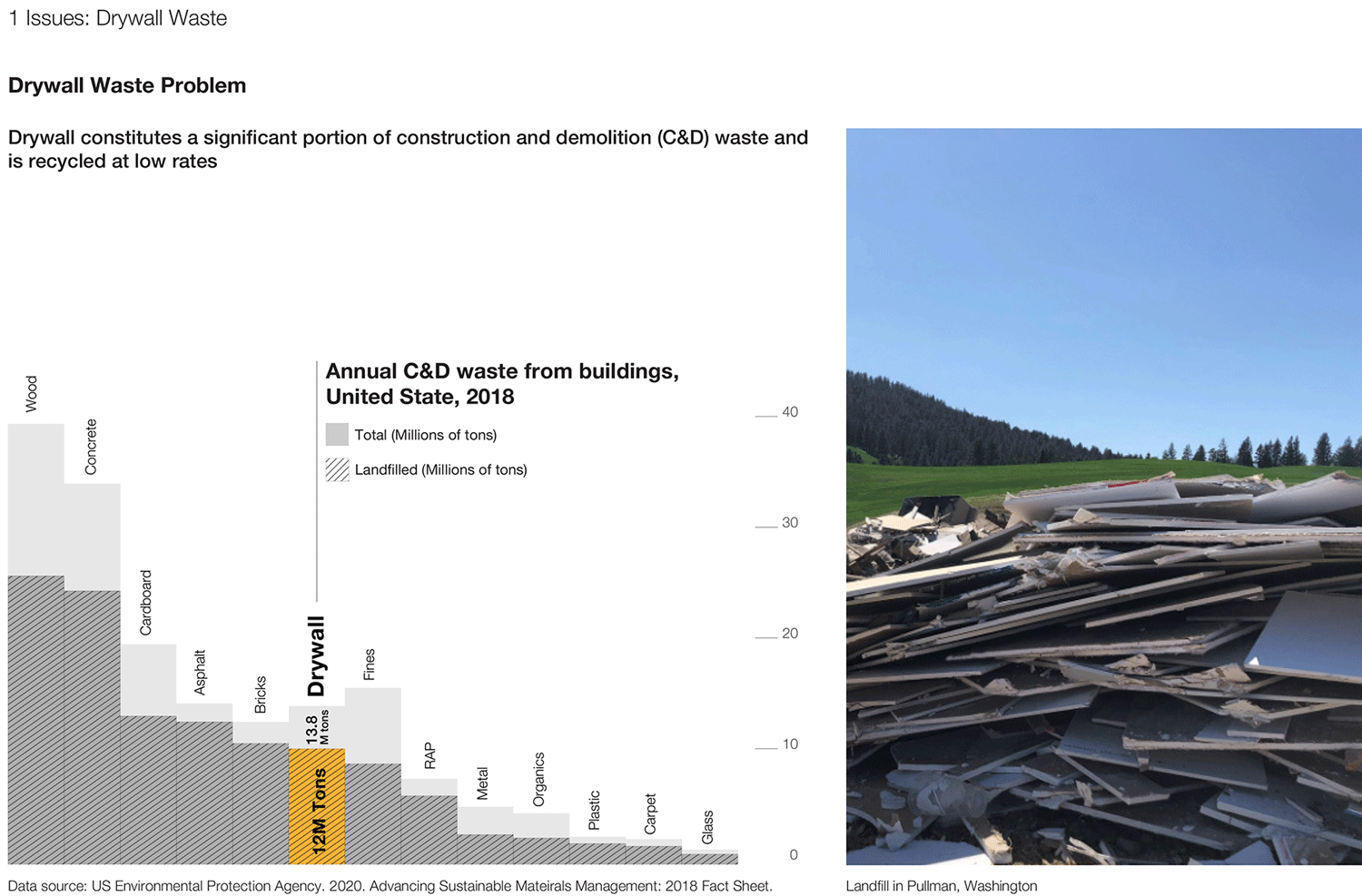
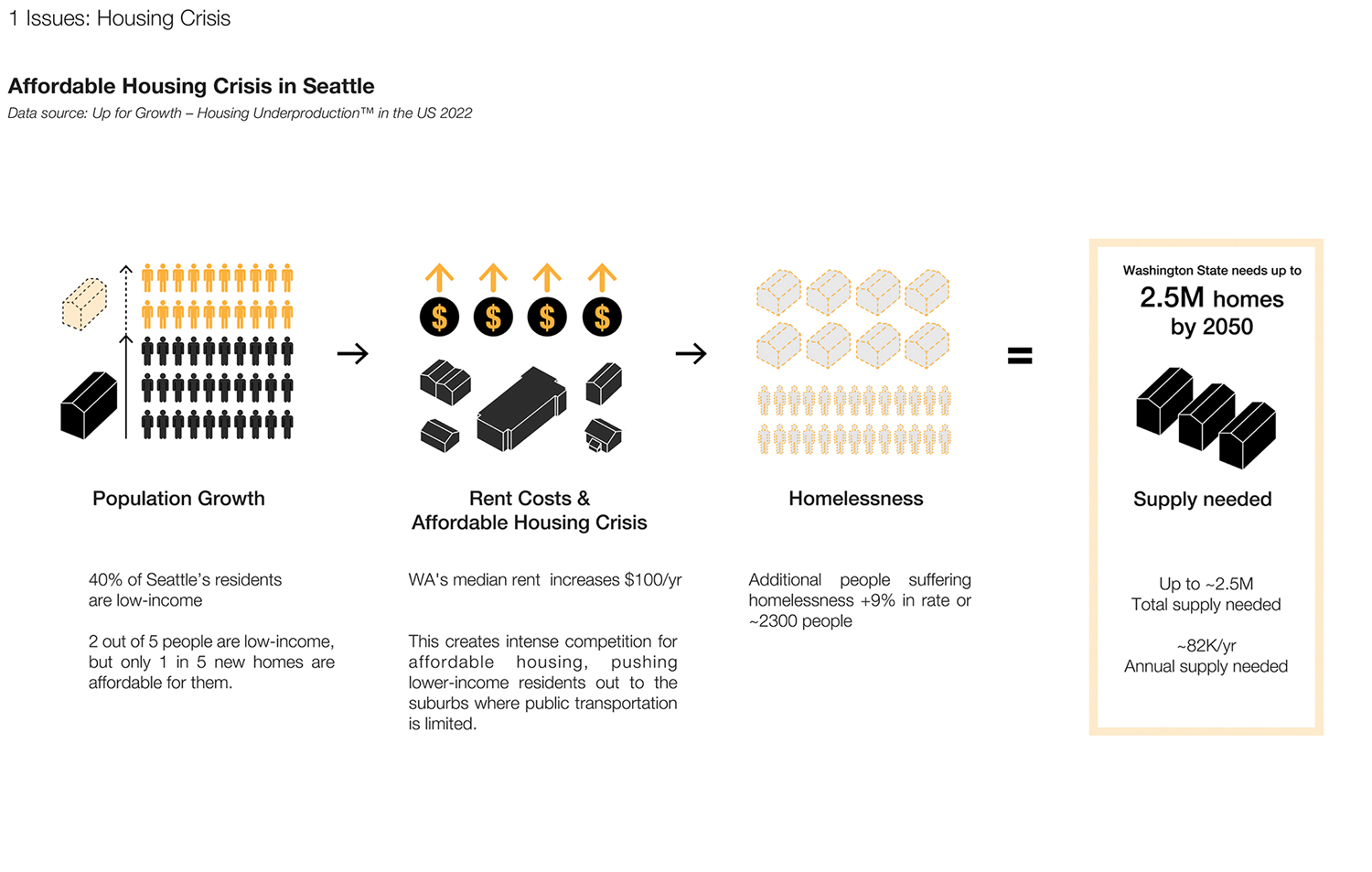
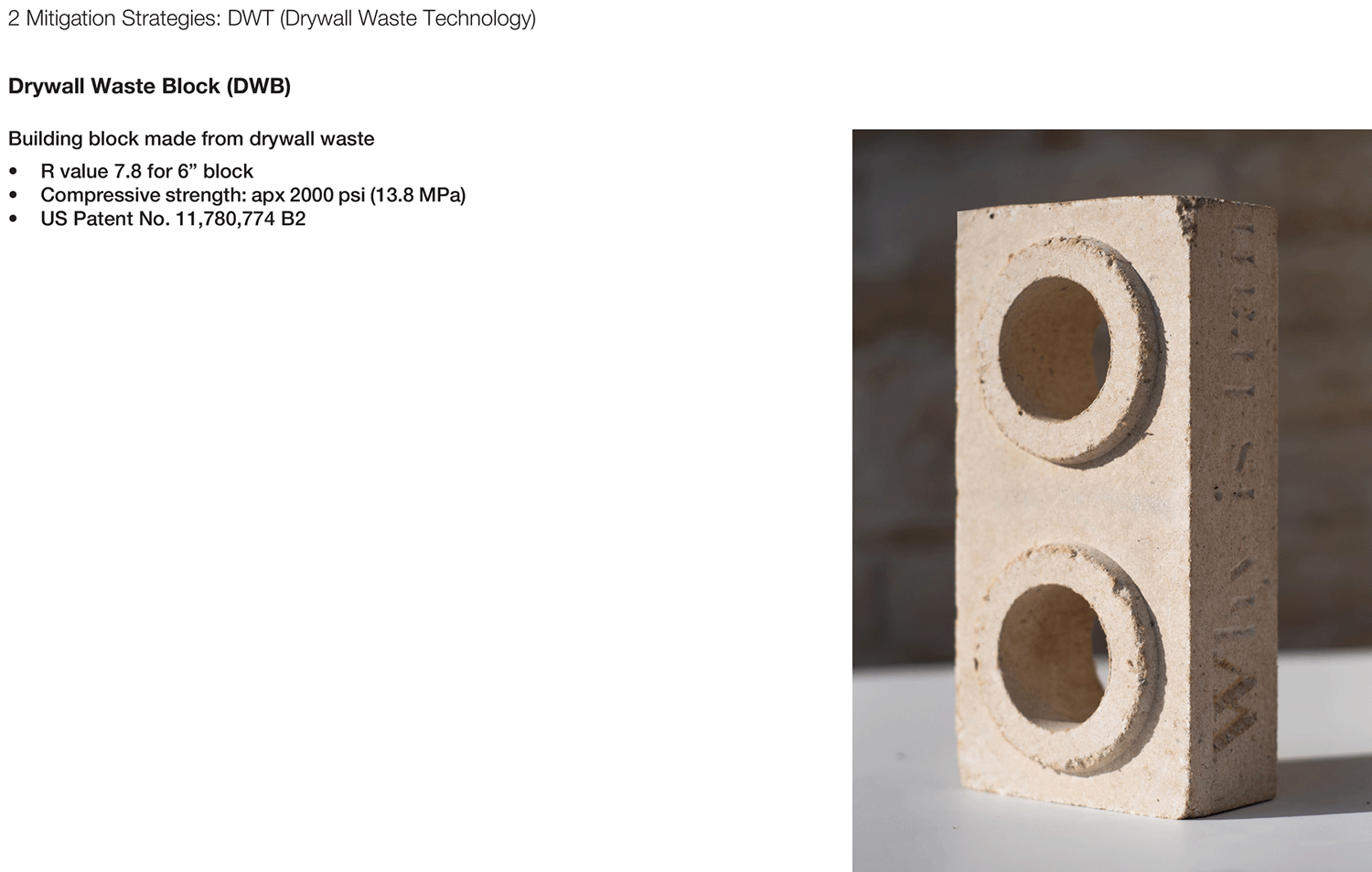
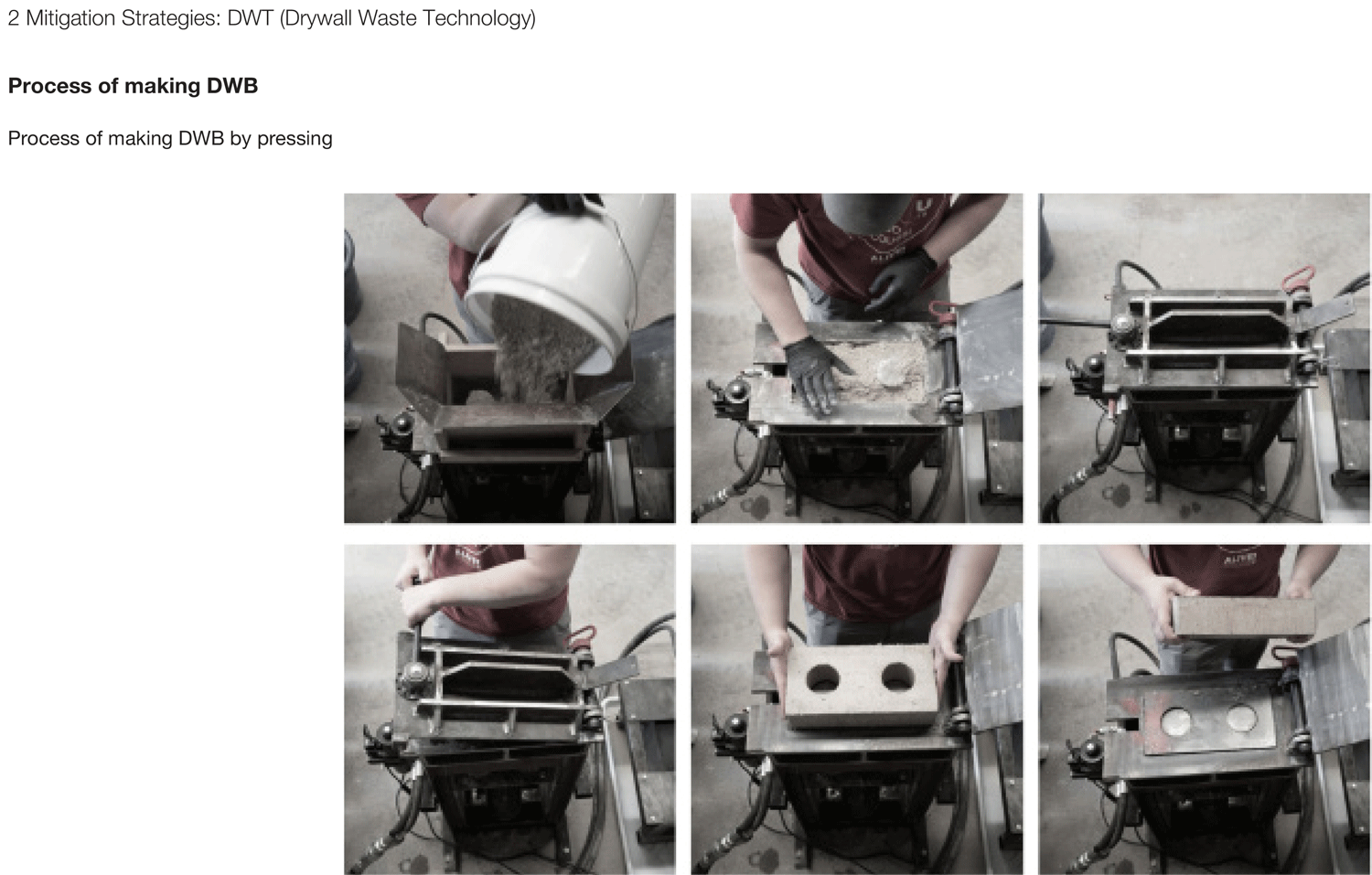


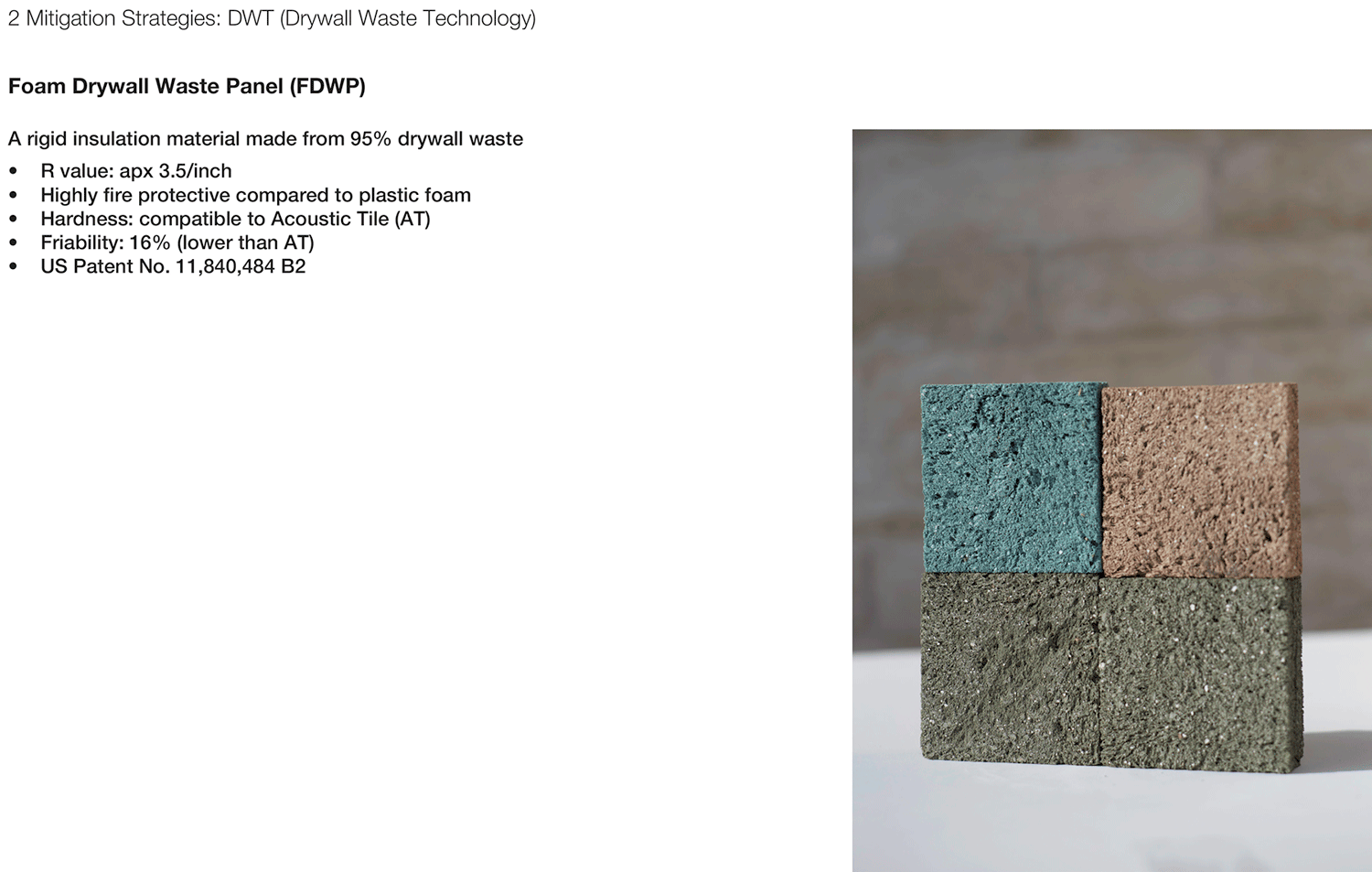

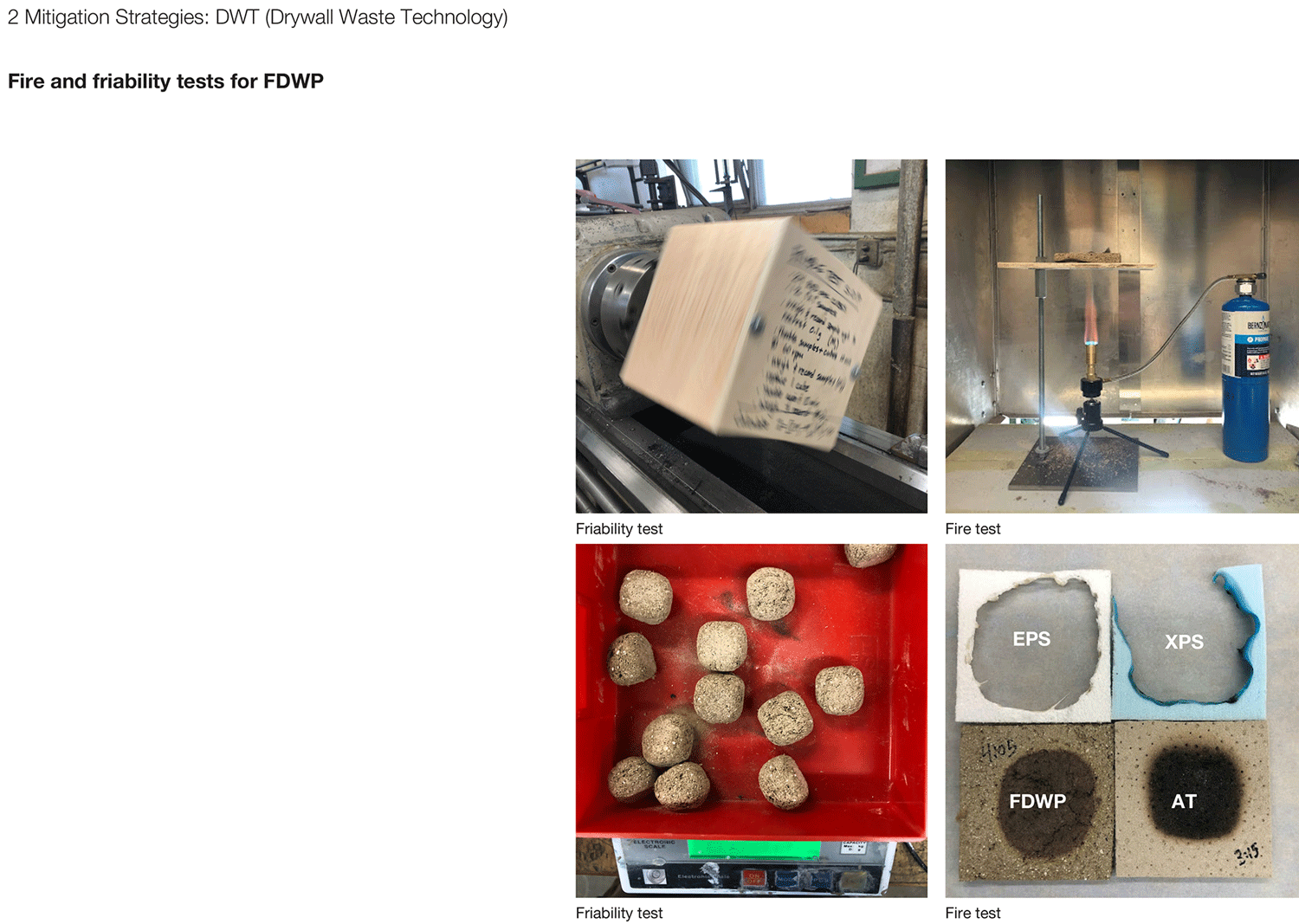
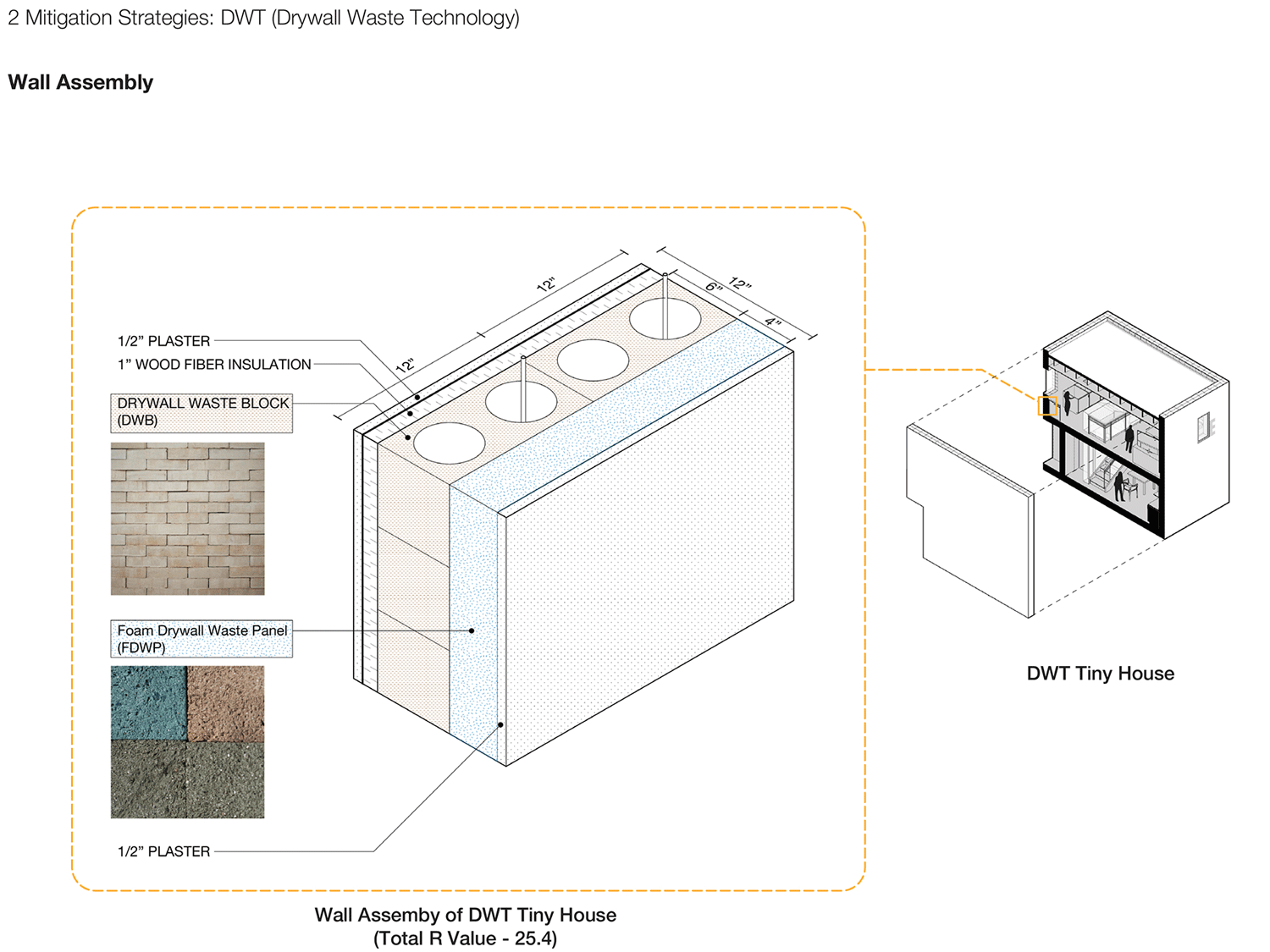
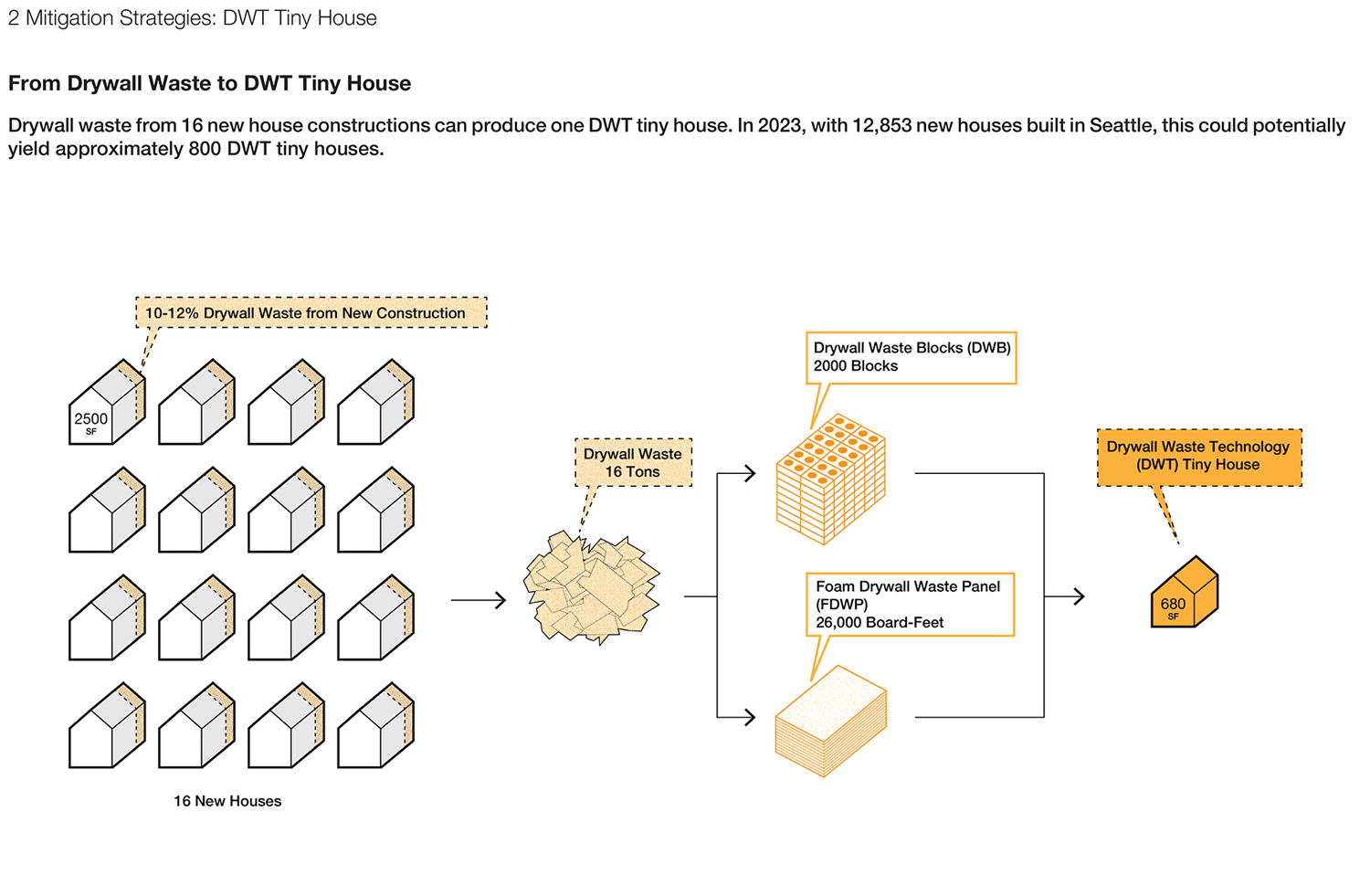
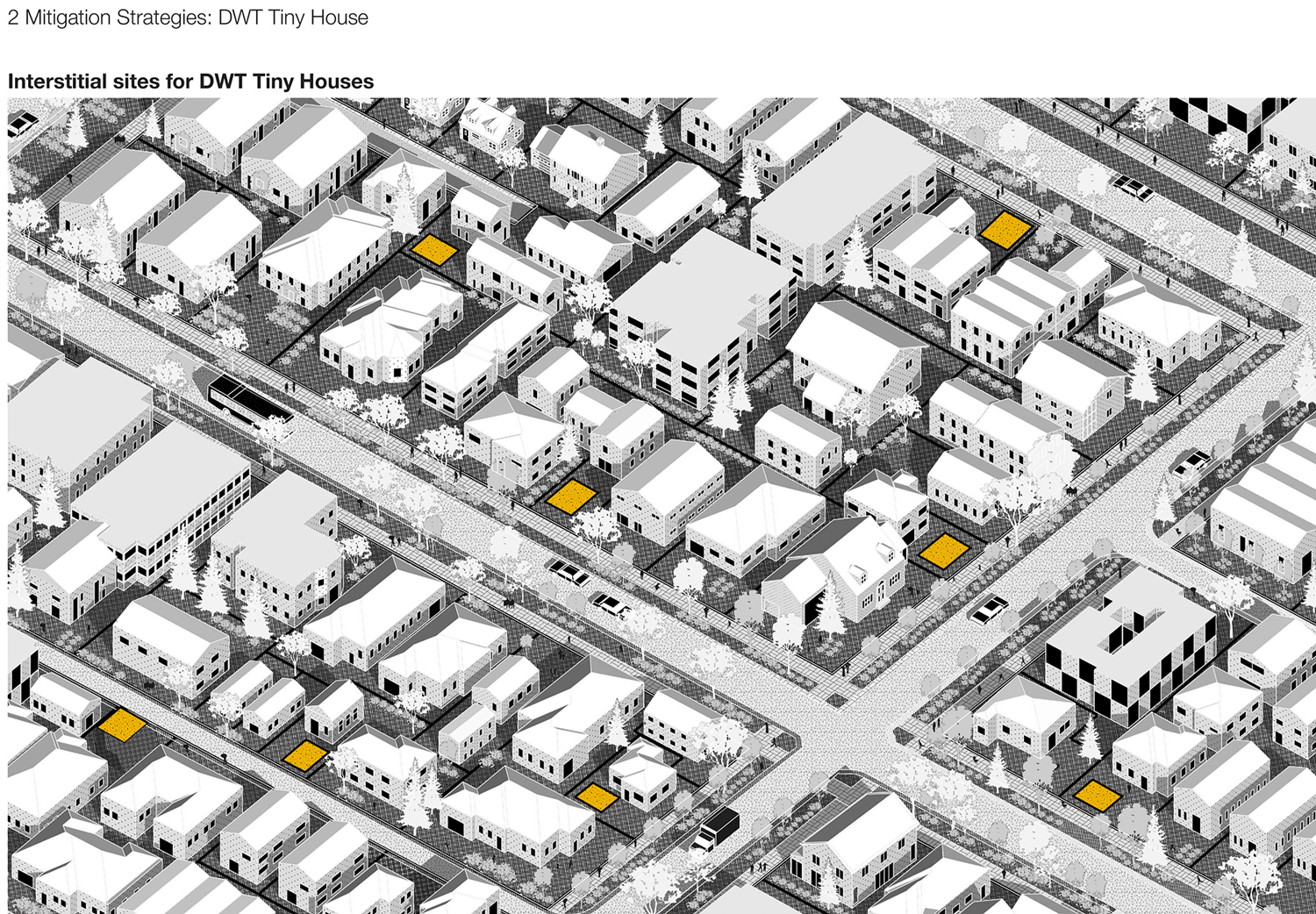
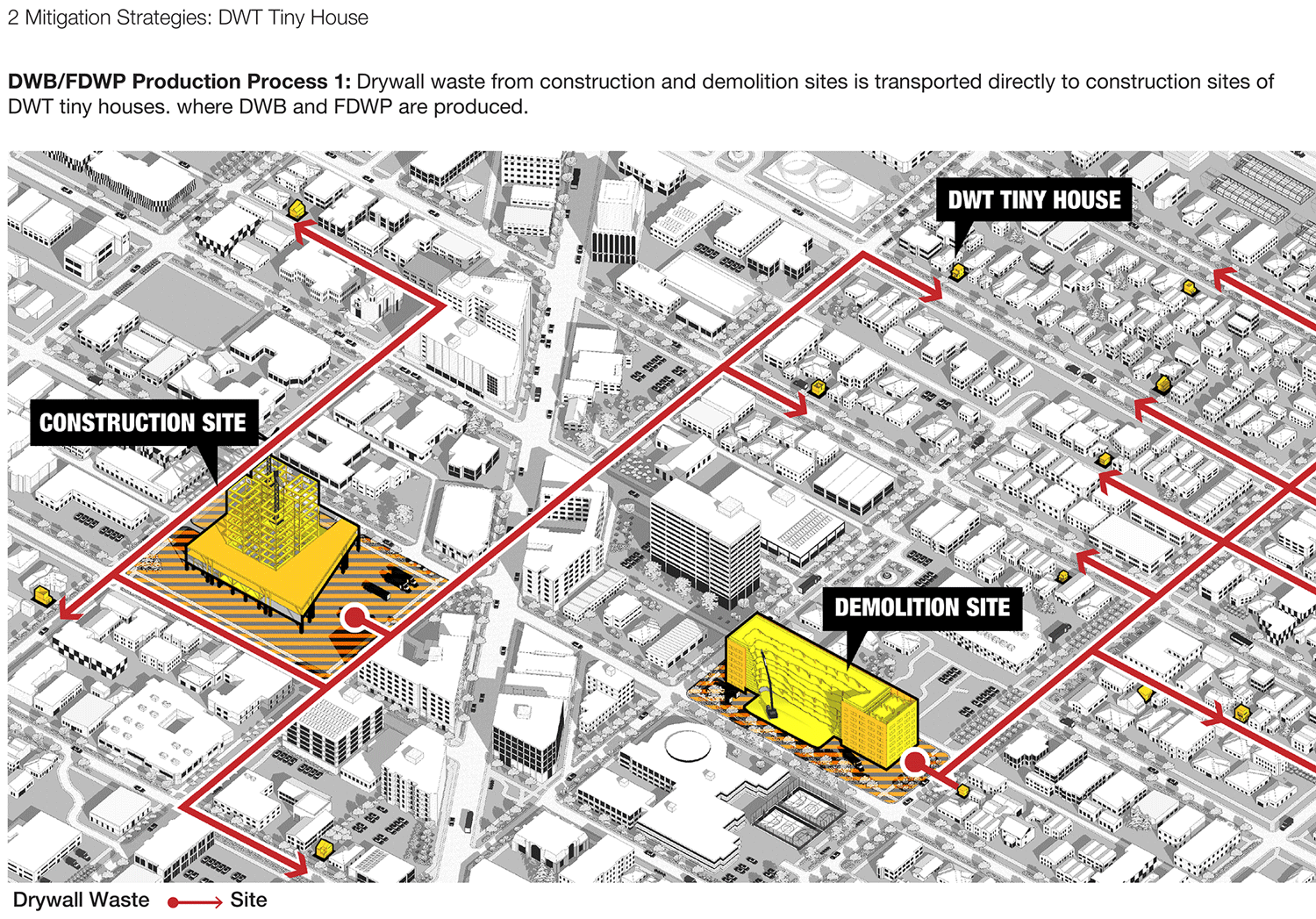




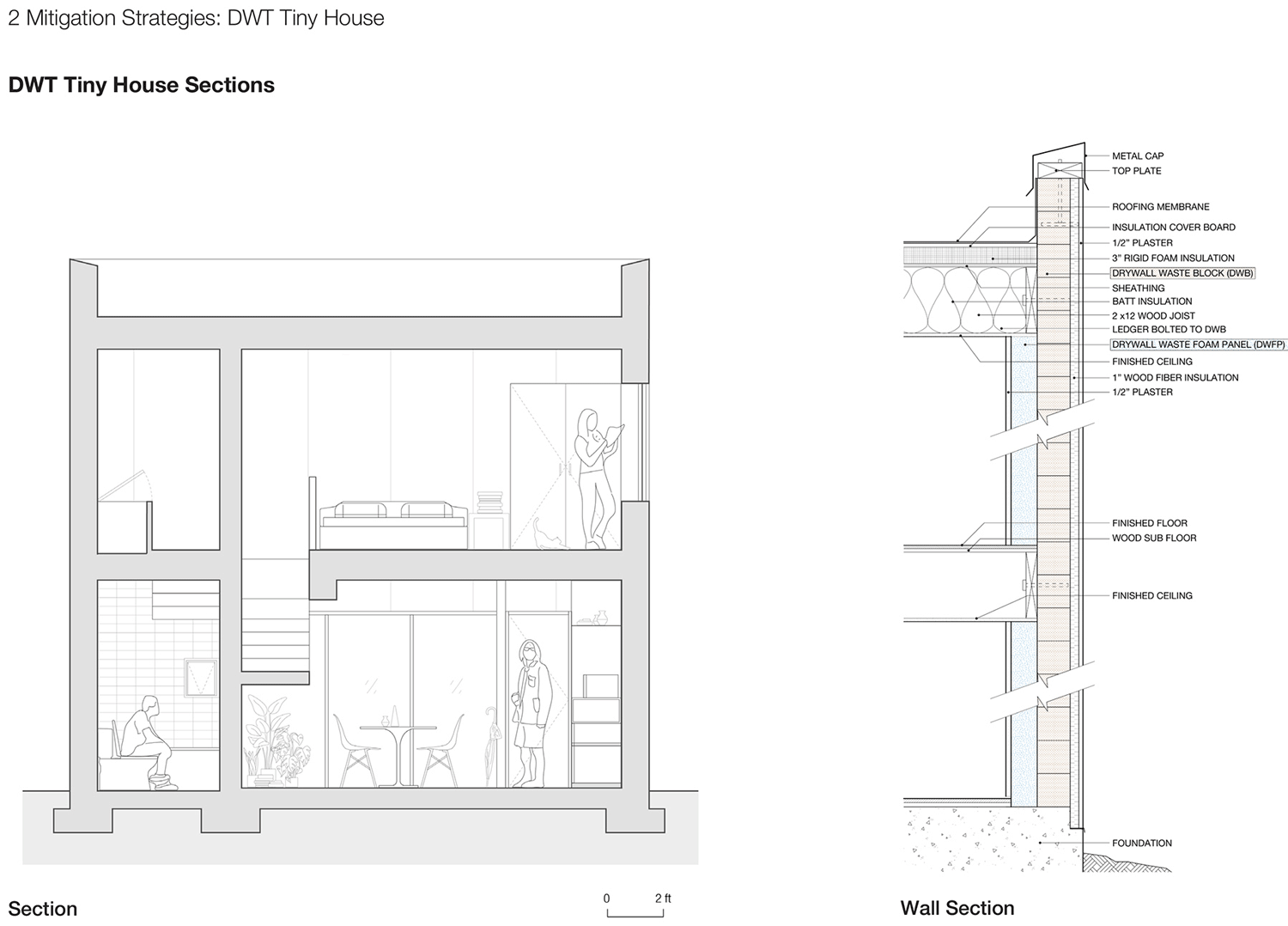
Project: DWT (Drywall Waste Technology) Tiny House, Seattle, WA
Award: Azure Awards 2025
Winner in Environmental Leadership (Jury Award for First Place)
People’s Choice Award in Environmental Leadership (Public Vote)
Award of Merit in Concept
(https://awards.azuremagazine.com/article/drywall-waste-technology-dwt-tiny-house)
Collaborator: David Drake, Juliette Dubroca, Pimchid Chariyacharoen, Jason Peschel and Omar Al-Hassawi
The DWT Tiny House project tackles two urgent challenges—drywall waste and Seattle’s housing shortage—through material innovation, low-tech sustainability, and compact urban design. Drywall is one of the most widely used building materials, yet 10–15% of new drywall becomes waste, contributing to over 13 million tons annually in the U.S., with 87% ending up in landfills. Some regions have banned drywall disposal entirely due to hydrogen sulfide emissions and groundwater contamination risks. Because markets for recycled drywall are extremely limited, new approaches are critical. To address this, we developed Drywall Waste Technology (DWT)—a method that pulverizes drywall scrap and transforms it into new, high-performance building materials without removing the paper. In 2023, U.S. Patent No. 11,780,774 B2 was issued for this technology, with a divisional patent expected soon. Two material innovations grew from this work:
DWB (Drywall Waste Blocks)
Lightweight, insulating masonry units made by combining drywall waste with water and a carbon-neutral binder. Produced through a low-energy compaction process, either on-site or in conventional CMU plants, DWB achieve compressive strength comparable to concrete block while weighing roughly half as much. Their insulation performance can be up to 10 times higher than standard concrete masonry. A US patent (No. 11,780,774 B2) was issued for this technology in 2023.FDWP (Foam Drywall Waste Panels)
A rigid insulation panel composed of 95% drywall waste and other waste ingredients. Manufactured through low-energy, low-toxicity methods, FDWP prototypes offer R-values comparable to fiberglass or mineral wool (R-3 to R-3.5 per inch). Unlike typical plastic foam insulations, FDWP is naturally fire-protective, enabling lighter, higher-performing wall assemblies with fire ratings similar to drywall firewalls. This technology was also awarded U.S. Patent No. 11,780,774 B2 in 2023.
Building on these materials, the DWT Tiny House initiative proposes compact, two-story dwellings designed for small, overlooked urban sites—spaces often considered unbuildable yet increasingly valuable in dense cities like Seattle. With a 340 sq ft footprint and compatibility with standard construction methods, these homes are intended to be cost-effective, highly sustainable, and straightforward for volunteers to help build.
Together, these innovations demonstrate how low-tech, circular design can meaningfully reduce environmental impact while opening new possibilities for urban housing affordability.